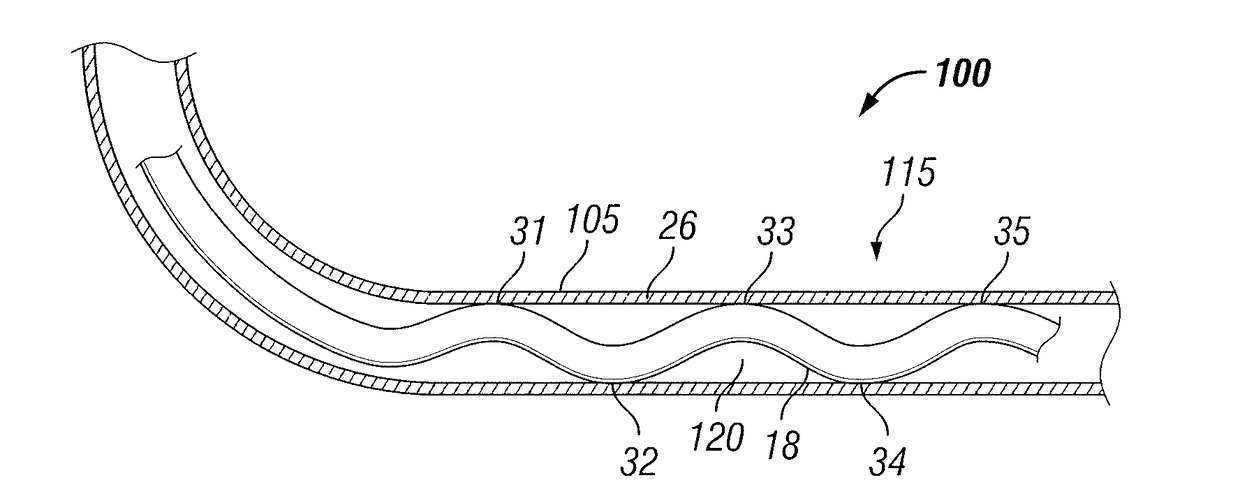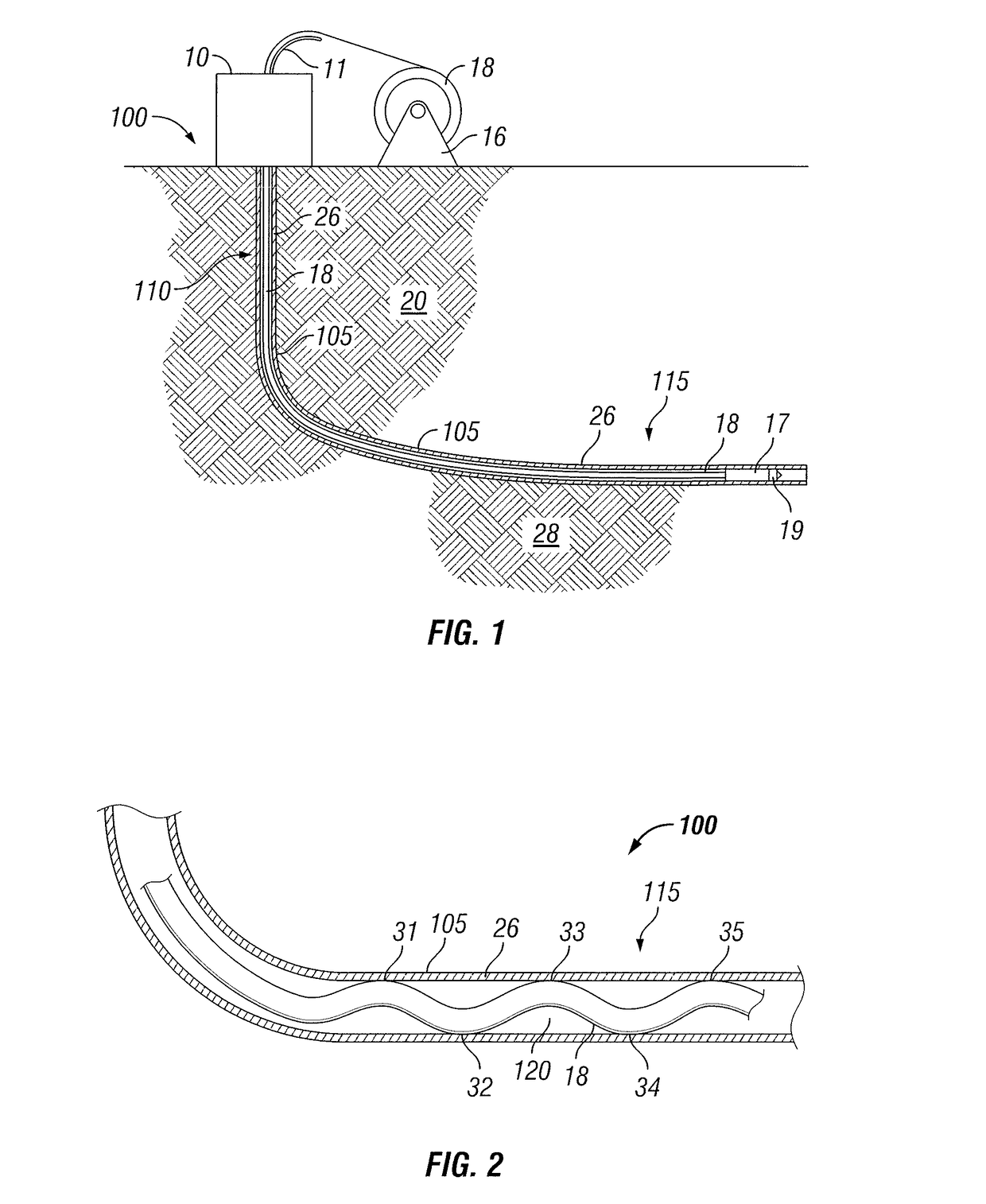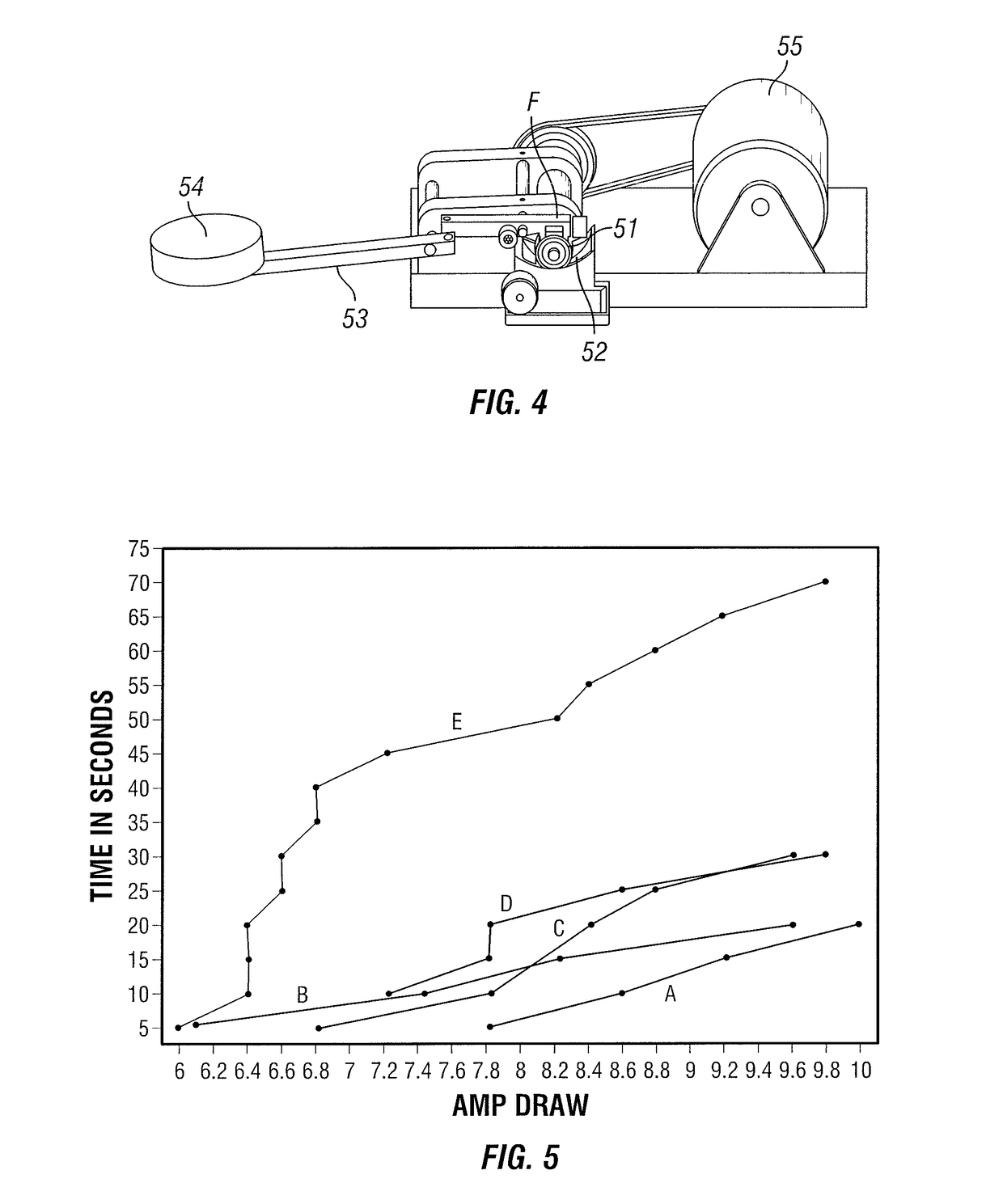Completion Fluid Friction Reducer
a technology of compressive fluid and friction reducer, which is applied in the direction of directional drilling, lubricant composition, and borehole/well accessories. it can solve the problems of increasing the length of the horizontal section of the borehole, increasing the difficulty of drilling conduits, and limited ability to push or rotate drill pipes in the wellbore. it reduces the coefficient of friction
- Summary
- Abstract
- Description
- Claims
- Application Information
AI Technical Summary
Benefits of technology
Problems solved by technology
Method used
Image
Examples
example 1
[0035]An illustration of a device used to evaluate the performance of the friction reducer disclosed herein is shown in FIG. 4. This bench-top friction tester is manufactured by JUSTICE BROS.®, and is intended for evaluating the performance of lube oil additives. JUSTICE BROS.® is a registered trademark of Justice Brothers, Inc. of Duarte, Calif. Force F of a metal bar is applied to rotating metal bearing surface 51. Cup 52 surrounding the bottom quarter of the rotating bearing surface provides a reservoir to hold the fluid being tested. Force F is applied to lever 53 by placing weight 54 on one end of the lever. A 1-pound weight applies a force of 100 psi to the bearing surface. The performance of the fluids is measured by observing the amperage draw of 110 volt one-quarter HP motor 55 used to rotate the bearing with a constant force on the bearing. Amperage is recorded in 5-second intervals. The testing is complete when galling of the bearing surface is heard or current drawn by t...
example 2
[0040]A well operator had set 10 bridge plugs inside casing in the horizontal section of a well in Texas. Operations to drill the bridge plugs were conducted using coiled tubing. The well had a vertical depth of about 8,290 ft and had a measured depth of about 13,220 ft. Coiled tubing had been used to drill all plugs but the bottom two plugs. Using a conventional friction reducing fluid, friction limited the ability to drill the last two plugs. The decision was made to try the oil phase composition disclosed herein. After adding the oil phase mixture disclosed in Example 1 to water at rates of 1 or 2 gals per 10 bbls and circulating the present fluid up the annulus outside the coiled tubing, the final two plugs were reached and drilled. In a second well drilled from the same pad as the first well, friction was higher than in the first, but all the plugs were successfully drilled from the well using the composition disclosed herein. The representative of the well operator who was pre...
PUM
| Property | Measurement | Unit |
|---|---|---|
| depth | aaaaa | aaaaa |
| depth | aaaaa | aaaaa |
| coefficient of friction | aaaaa | aaaaa |
Abstract
Description
Claims
Application Information
 Login to View More
Login to View More - R&D
- Intellectual Property
- Life Sciences
- Materials
- Tech Scout
- Unparalleled Data Quality
- Higher Quality Content
- 60% Fewer Hallucinations
Browse by: Latest US Patents, China's latest patents, Technical Efficacy Thesaurus, Application Domain, Technology Topic, Popular Technical Reports.
© 2025 PatSnap. All rights reserved.Legal|Privacy policy|Modern Slavery Act Transparency Statement|Sitemap|About US| Contact US: help@patsnap.com



